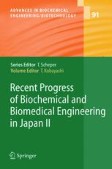Search
Search Results
-
Introduction
Genetic algorithms (GAs) are powerful search techniques based on principles of evolution. They are now widely applied to solve problems in many...
-
Linkage Learning Genetic Algorithm
In order to handle linkage evolution and to tackle the ordering problem, Harik [47] took Holland’s call [53] for the evolution of tight linkage quite...
-
Preliminaries: Assumptions and the Test Problem
After introducing the background and motivation of the linkage learning genetic algorithm, we will start to improve and understand the linkage...
-

-
Content Based Image Compression in Biomedical High-Throughput Screening Using Artificial Neural Networks
Biomedical High-Throughput Screening (HTS) requires specific properties of image compression. Particularly especially when archiving a huge number of...
-
Discriminative Clustering of Yeast Stress Response
When a yeast cell is challenged by a rapid change in the conditions, be it temperature, osmolarity, pH, nutrient or other, it starts a genome stress...
-
Medical Bioinformatics: Detecting Molecular Diseases with Case-Based Reasoning
Based on the Human Genome Project, the new interdisciplinary subject of bioinformatics has become an important research topic during the last decade....
-
Deconvolution Microscopy
Since its introduction in 1983, deconvolution microscopy has become a key image-processing tool for visualizing the cellular structures of fixed and...
-
Molecular Components of Physiological Stress Responses in Escherichia coli
In order to survive under and adapt to different conditions Escherichia coli has evolved elaborate systems that are able to sense and respond to...
-
Application of Knowledge Information Processing Methods to Biochemical Engineering, Biomedical and Bioinformatics Fields
In biochemical and biomedical engineering fields there are a variety of phenomena with many complex chemical reactions, in which many genes and...
-
Total Internal Reflection Fluorescence Microscopy in Single Molecule Nanobioscience
Recent development in total internal reflection fluorescence microscopy (TIRFM) has made it possible to directly monitor the behaviors of...
-
Tracking Movement in Cell Biology
This article is an overview of techniques for measuring movement of proteins, vesicles and cells using digital image processing. Diverse techniques...
-
Taxonomy and phylogenetic diversity among the yeasts
Yeasts are among the economically and scientifically most important eukaryotic microorganisms known. At present, there are 1,500 recognized species,...
-
Metabolic Engineering
Metabolic engineering is a powerful methodology aimed at intelligently designing new biological pathways, systems, and ultimately phenotypes...
-
Cell-free Protein Synthesis Systems: Increasing their Performance and Applications
The Escherichia coli cell-free protein synthesis system can now be used for various proteins that need special requirements, such as disulfide bond...
-
Regeneration of Articular Cartilage
Loss of articular cartilage from the ends of bones forming diarthrodial joints can be the source of profound pain and disability, and eventually lead...
-
Fluorescence Lifetime Imaging Microscopy (FLIM)
Fluorescence lifetime imaging microscopy (FLIM) is a technique to map the spatial distribution of nanosecond excited state lifetimes within...
-
Spectral Imaging and Linear Unmixing in Light Microscopy
Fluorescence microscopy is an essential tool for modern biological research. The wide range of available fluorophores and labeling techniques allows...
-
Model-based Inference of Gene Expression Dynamics from Sequence Information
A dynamic model of prokaryotic gene expression is developed that makes considerable use of gene sequence information. The main contribution arises...
-
Bioprocess Monitoring Using Near-Infrared Spectroscopy
Near-infrared spectroscopy (NIR) is a nondestructive analytical technique that has been used for simultaneous prediction of the concentrations of...
